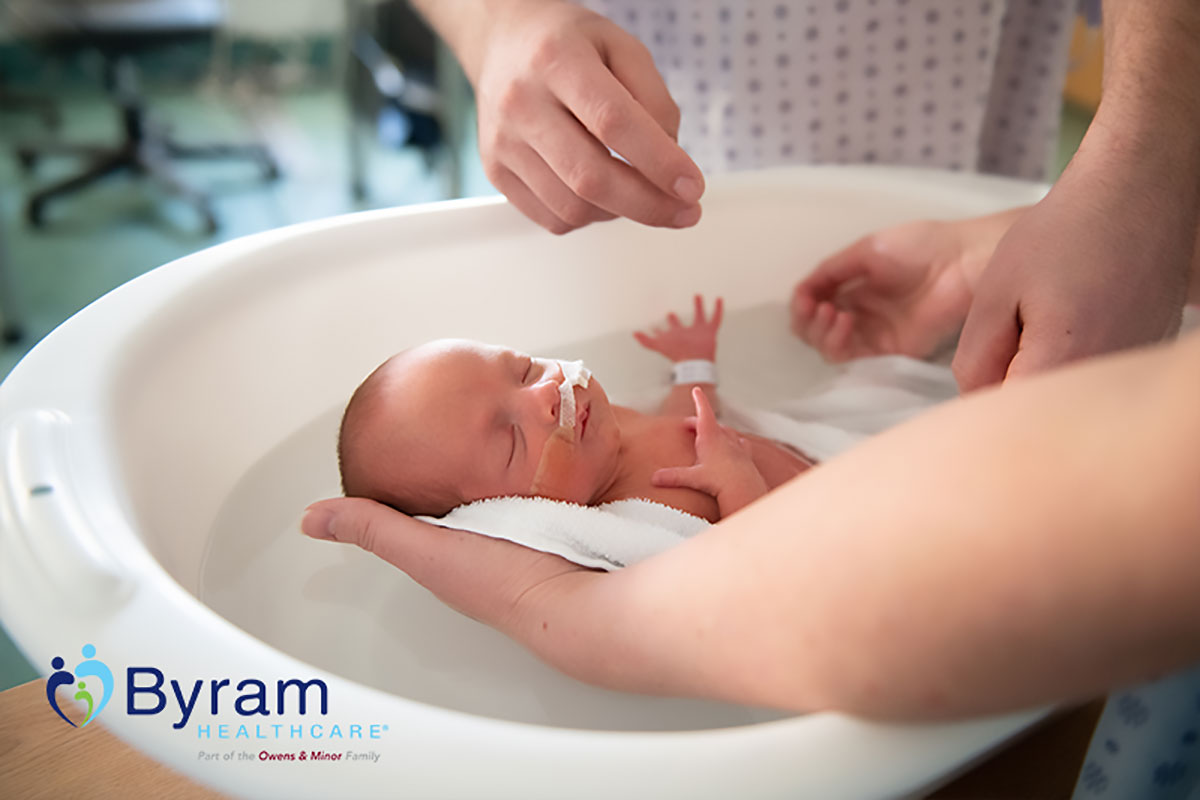Delivery Day Decisions—Prepare Before Going into Labor
As you start to get closer to your due date, it’s important to make some delivery day decisions. You prepared for your pregnancy, so it makes sense that you’d also prepare for your delivery. If you’ve already written a birth plan, that’s great! You’ve likely covered a few, if not all, of these decisions. If you haven’t gotten around to creating a birth plan, don’t worry. There’s still time. Just make sure you include these important delivery day decisions, as they’ll need to be made within hours, some even minutes, after you’ve given birth.
1. Labor Pain Management
Labor is different for every woman and every pregnancy. Just because one person has a difficult time, doesn’t mean that you will too. However, you won’t know until you’re in labor. At that time, making a decision will seem close to impossible and if you don’t already know how you want to proceed, it will be difficult.
Instead, think about your pain management before you go into labor. When you look at your options and make a plan ahead of time, you won’t have to worry about outside stressors. If you go into labor and find that your pain isn’t too bad, it’s possible to skip the epidural. Similarly, if you were planning on giving birth without medication, but the pain is unbearable, getting an epidural shouldn’t be a problem. Talk to your doctor about your plans so you know exactly what your options are.
2. Breastfeeding
We, like many doctors, recommend breastfeeding your baby. Breastfeeding is a wonderful bonding experience between a mother and her newborn and it has unbeatable health benefits. Regardless of your decision, take the time to make it and prepare before going into labor.
This allows you to read about how breastfeeding works, some tips to get your newborn to latch, and learn what to do if you’re struggling. Talk to your doctor and the hospital about whether or not there will be a latching consultant available for post-delivery help.
3. Skin-to-Skin Newborn Care
Delivery is a messy process, but holding your newborn is important and at that point, you won’t even think twice about the mess. Skin-to-skin contact right after birth is a good way to immediately comfort and bond with your baby. You need to decide whether or not you want to do this immediately or wait until your baby has been examined, cleaned, and returned to you ahead of time so the hospital staff is prepared.
When you opt for immediate skin-to-skin contact, a nurse will put your baby on your bare chest, unwrapped, and evaluate him or her during the skin-to-skin contact. The full evaluation will be done after some skin-to-skin time.
4. Bathing

In addition to the immediate skin-to-skin contact, some mothers opt to give their newborn their first bath rather than have the nursing staff take care of it. Babies are born covered in a waxy, white-ish substance that’s called vernix. According to recent research, experts are seeing benefits of keeping the vernix on your newborn for the first 24 hours. The vernix helps keep your baby warm, regulates blood sugar, and allows for more bonding time immediately after birth.
If you want to take your baby’s first bath into your own hands, make sure that you tell your doctor and include it in your birth plan. If you don’t, nurses will end up giving him or her a bath soon after delivery.
5. Pacifier Use

Using a pacifier comes with a lot of pros and cons that should be weighed prior to delivery day. While pacifiers tend to sooth babies, they also lead to missed feeding cues—an essential part of breastfeeding—and nipple confusion. Take the time to do some research, talk to your doctor, and decide whether or not you’ll use a pacifier beforehand.
6. Circumcision
If you’re having a boy, you’ll need to decide whether or not you and your partner want to have him circumcised. This could be an easy decision for you, but it’s worth looking into. While most men in the U.S. are circumcised, the number continues to decline. Take the time to research the pros and cons of circumcision before going into labor and talk to your doctor about your options.
7. Placenta Release
In recent years, the number of women who decide to keep their placenta has risen. There are some moms that don’t care, some who want to keep it for cultural reasons, and others who want to eat their placenta—take the time to learn which group you’re in. However, it should be noted that while there is some speculation that consuming your placenta boosts a number of health benefits, the Centers for Disease Control and Prevention does not recommend, and even warns against, eating your placenta.
We’re not here to tell you what to do, but since the placenta usually follows delivery quickly, you should make a decision and inform your doctor. If you do want to save it for whatever reason, this will give your doctor the resources to ensure that it’s collected and stored safely for you.
8. Pediatric Care
During your pregnancy, you’ll become close with your primary care doctor. They help you stay healthy, monitor your progress, and find solutions when something goes wrong. A newborn needs a doctor too, which is why making a decision about who your pediatrician will be before delivery is a great idea. In fact, there are a number of hospitals that require it.
Take the time to make visits to pediatric offices during your pregnancy and find someone that you like and feel comfortable with.
9. Delayed Cord Clamping
Traditionally, the umbilical cord is cut immediately after birth. What we’re learning now is that this has the potential to be problematic, because at that time 30% of your baby’s total blood volume is still in the umbilical cord. Instead of immediately cutting it, research delayed cord clamping and decide if it’s something you’re interested in doing.
Delayed cord clamping involves waiting for a few minutes before cutting the umbilical cord. This allows the remainder of the blood to get to your baby and offers a number of other health benefits. Read more about delayed cord clamping and talk to your doctor if you have any questions.
10. Cord Blood Banking
Similarly, you have the option for cord blood banking. This involves collecting all of the remaining blood in the umbilical cord and placenta and saving it for future use. The blood in the umbilical cord and placenta is rich with stem cells and has very useful medicinal properties.
You need to decide ahead of time though, as this process will require specific kits and procedures on delivery day. It should also be noted that you can do both cord blood banking and delayed cord clamping if that’s what you choose.
11. Antibiotic Eye Care
When babies are born, they need a special antibiotic eye ointment in the first few minutes to help reduce the likelihood of eye infections that lead to blindness. The eye drops work to kill dangerous bacteria and any bacteria from an STD that may have been passed down. If you’re not at risk for any STDs, or if you just want to decline, you don’t need to administer the antibiotics, however there are close to zero risks with getting them. You’ll need to decide what you want to do prior to delivery since they should to be administered very quickly after birth.
12. Vitamin K Injection
Vitamin K helps prevent hemorrhagic disease of the newborn, otherwise known as vitamin K deficient bleeding. After birth, it’s recommended that you get this vitamin K injection into your son or daughters thigh to reduce the chances of a vitamin K bleed, which can be fatal. However, the choice is up to you. Talk to your doctor and future pediatrician to learn more about the risks and benefits of getting this injection.
Conclusion
Labor and delivery is different for every woman, and every pregnancy. Not every mother will be put in a position to make a last-minute change to her birth plan, but if you are then it’s always better to be prepared. Hopefully, this article will help you make these delivery day decisions and prepare for everything before you go into labor. During your preparation, don’t forget to head over to Byram Healthcare and browse all of the available breast pumps on the site. Thanks to the Affordable Care Act, expectant mothers are eligible to receive an electric breast pump covered by their insurance provider!
If you have any comments or stories about your delivery day, head over to our Facebook page today and leave us a comment! Our communities of new and expecting moms are always thankful to hear from experienced moms in the group.






